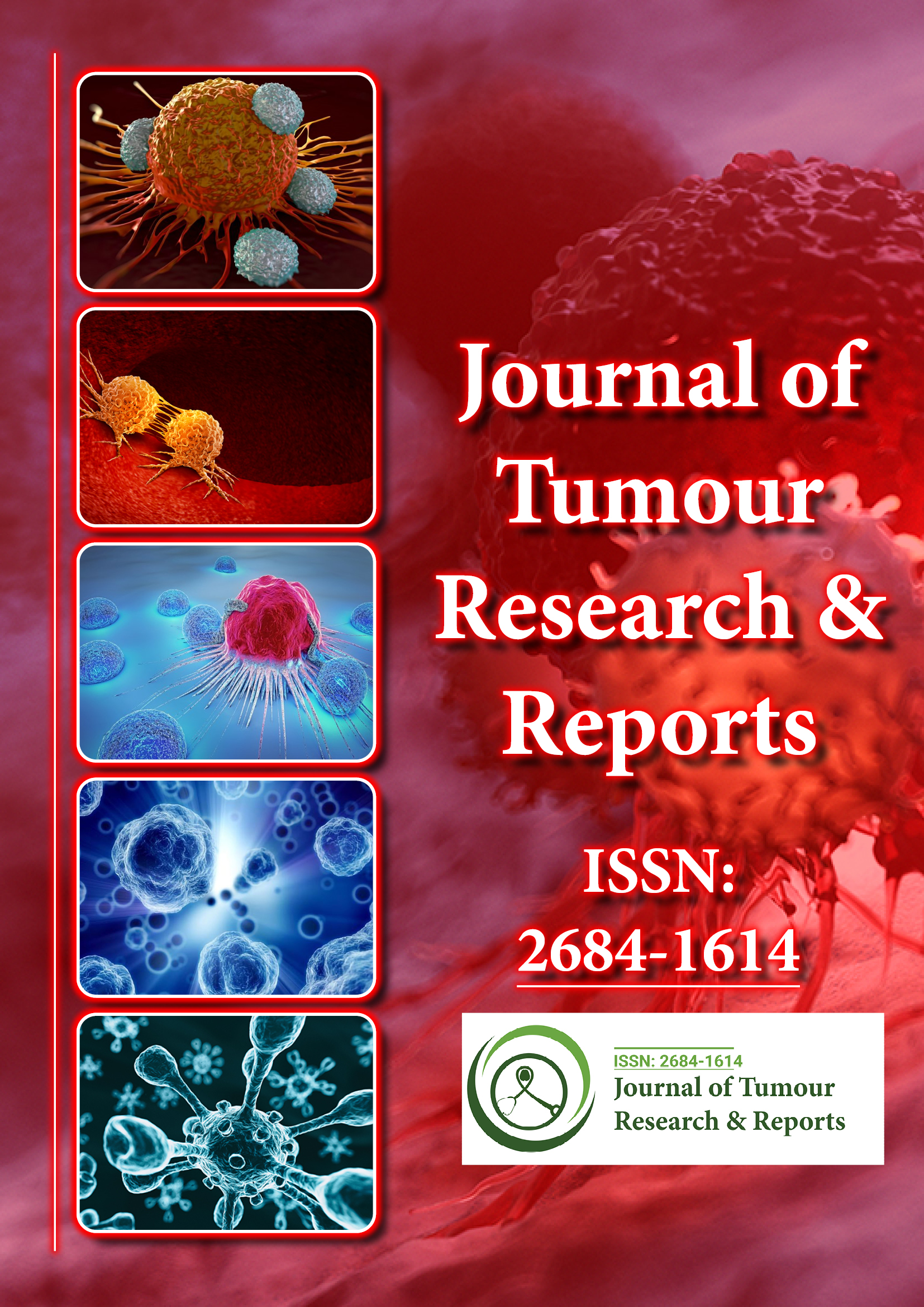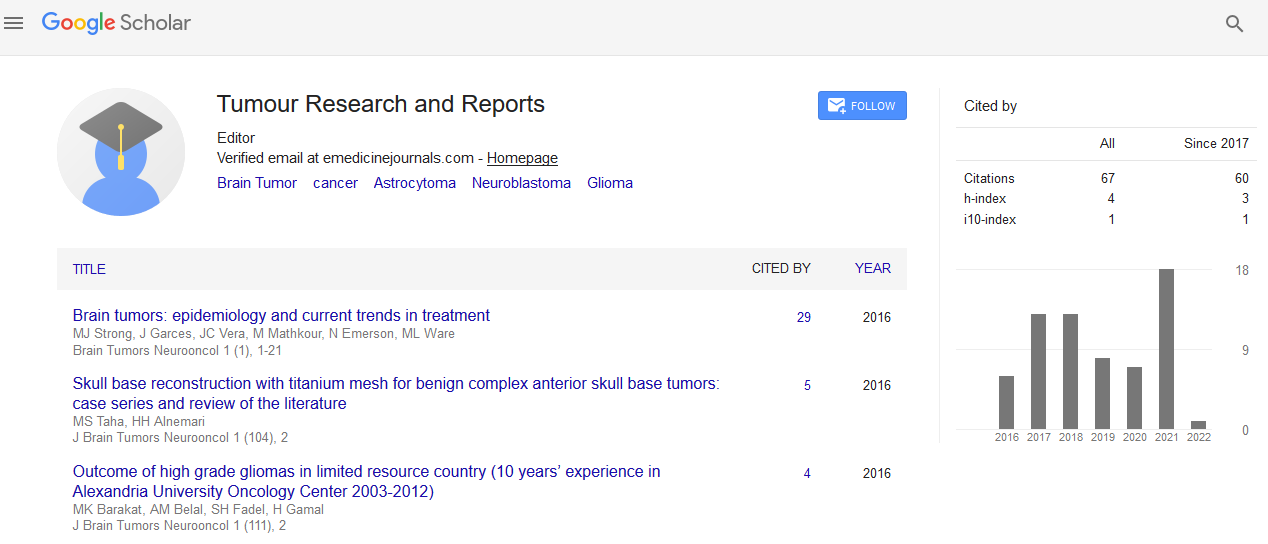Indexed In
- RefSeek
- Hamdard University
- EBSCO A-Z
- Google Scholar
Useful Links
Share This Page
Journal Flyer

Open Access Journals
- Agri and Aquaculture
- Biochemistry
- Bioinformatics & Systems Biology
- Business & Management
- Chemistry
- Clinical Sciences
- Engineering
- Food & Nutrition
- General Science
- Genetics & Molecular Biology
- Immunology & Microbiology
- Medical Sciences
- Neuroscience & Psychology
- Nursing & Health Care
- Pharmaceutical Sciences
Perspective - (2025) Volume 10, Issue 2
Advances in Immunotherapy: Redefining the Landscape of Tumour Treatment
Chen Wei*Received: 30-May-2025, Manuscript No. JTRR-25-29818; Editor assigned: 02-Jun-2025, Pre QC No. JTRR-25-29818 (PQ); Reviewed: 16-Jun-2025, QC No. JTRR-25-29818; Revised: 23-Jun-2025, Manuscript No. JTRR-25-29818 (R); Published: 30-Jun-2025, DOI: 10.35248/2684-1614.25.10.257
Description
Immunotherapy has revolutionized the field of oncology by harnessing the power of the immune system to fight cancer. Unlike traditional treatments such as chemotherapy and radiation, which directly target tumour cells but often damage normal tissues, immunotherapy seeks to activate the body’s natural defenses in a more specific and durable manner. Over the past two decades, remarkable advances have transformed immunotherapy from a theoretical concept into a clinical reality, offering new hope for patients with previously untreatable malignancies. The story of immunotherapy is one of perseverance, innovation, and the gradual unraveling of the complex relationship between cancer and the immune system.
The immune system has the inherent ability to recognize and eliminate abnormal cells. However, cancer cells develop sophisticated mechanisms to evade immune surveillance. They may downregulate antigen presentation, secrete immunosuppressive cytokines, recruit regulatory T cells, or express checkpoint molecules that inhibit T cell activity. Understanding these escape strategies has paved the way for therapies designed to counteract them. One of the most significant breakthroughs in this area is the development of immune checkpoint inhibitors. By blocking inhibitory receptors such as CTLA-4, PD-1, and PD-L1, these drugs unleash T cells to attack tumours. Clinical trials have demonstrated impressive responses in cancers such as melanoma, lung cancer, and renal cell carcinoma, fundamentally altering the standard of care.
Another major advance is the development of Chimeric Antigen Receptor T cell therapy (CAR-T). This approach involves genetically engineering a patient’s own T cells to express receptors that specifically target tumour antigens. Once infused back into the patient, these modified T cells can seek out and destroy cancer cells with remarkable precision. CAR-T therapy has shown dramatic success in hematological malignancies such as acute lymphoblastic leukemia and certain lymphomas, achieving remission in patients who had exhausted all other treatment options. However, challenges remain in extending this approach to solid tumours, where the tumour microenvironment and antigen heterogeneity pose significant barriers.
Cancer vaccines represent another promising avenue of immunotherapy. Unlike prophylactic vaccines against infectious diseases, therapeutic cancer vaccines aim to stimulate the immune system to recognize and attack established tumours. Approaches include peptide-based vaccines, dendritic cell vaccines, and nucleic acid vaccines. While clinical success has been limited so far, ongoing research continues to refine these strategies, often in combination with checkpoint inhibitors or other immunomodulatory agents. The development of mRNA vaccine technology, accelerated by the COVID-19 pandemic, has reinvigorated interest in this field, offering new platforms for rapid and personalized vaccine design.
Oncolytic viruses provide yet another innovative immunotherapy approach. These viruses selectively infect and kill tumour cells while sparing normal tissues. In addition to direct lysis of cancer cells, oncolytic viruses stimulate an anti-tumour immune response by releasing tumour antigens and danger signals. Talimogene laherparepvec, a genetically modified herpes simplex virus, has been approved for melanoma treatment, demonstrating the clinical viability of this strategy. Combining oncolytic viruses with other immunotherapies may further enhance their effectiveness, creating synergistic anti-cancer responses.
Despite these advances, immunotherapy is not without limitations. Not all patients respond, and some experience severe immune-related adverse events, such as colitis, hepatitis, or pneumonitis, due to overactivation of the immune system. Identifying biomarkers that predict response and toxicity is therefore a major focus of research. For example, tumours with high mutational burden or microsatellite instability tend to respond better to checkpoint inhibitors, while PD-L1 expression levels can provide some guidance, albeit imperfectly. Personalized approaches that integrate genetic, epigenetic, and microenvironmental factors are needed to optimize therapy.
The cost of immunotherapy also presents significant challenges. Checkpoint inhibitors and CAR-T therapies are among the most expensive treatments in oncology, raising concerns about accessibility and sustainability. Efforts to develop more cost-effective manufacturing processes, expand global access, and incorporate these therapies into public health systems are ongoing. Addressing these issues is critical to ensuring that the benefits of immunotherapy are equitably distributed across populations.
Citation: Wei C (2025). Advances in Immunotherapy: Redefining the Landscape of Tumour Treatment. J Tum Res Reports. 10:257.
Copyright: © 2025 Wei C. This is an open-access article distributed under the terms of the Creative Commons Attribution License, which permits unrestricted use, distribution, and reproduction in any medium, provided the original author and source are credited.

